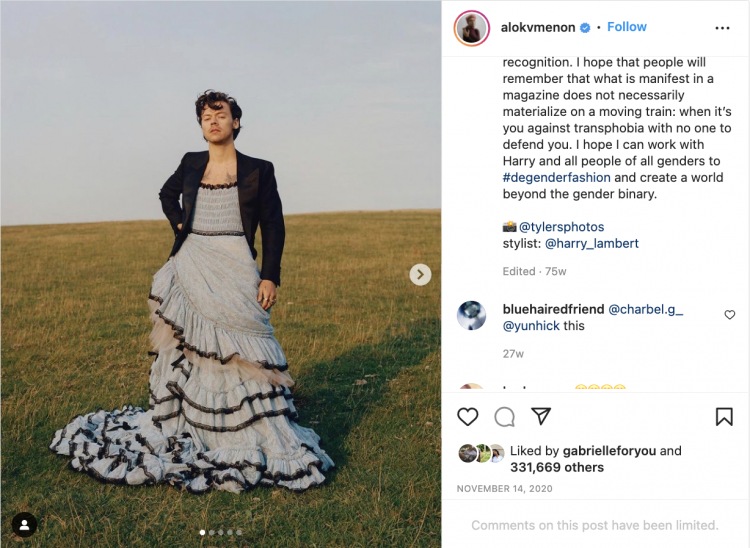Who Wears The Pants?

There is a common American saying, “Who wears the pants in the relationship?” implying the person who wears pants holds the power over the other. From the day we are born, society expects us to abide by our gender roles, a male baby is placed in a blue beanie, and a female in pink. We are expected to walk, talk, act, and dress according to the reproductive organs we are born with. But it's these exaggerated ideals and behavior that restrict people from fully expressing themselves.
The saying recalls American traditional male dress, a pair of trouser pants, inferring that men oversee their skirt-wearing stay-at-home spouses. We often view this quote as anti-feminist, yet we fail to recognize the societal restrictions it places on male dress. Today, a number of men and brands are working hard to redefine gender norms in clothing, breaking away from male bounded stereotypes and moving towards an androgynous style.
Masculine fashion is deep-rooted in stereotypes that uphold conforming values. Historically, items such as stockings, high heels, and even the color pink were staples in traditional male dress. However, these garments today are labeled as feminine. The fashion industry is evolving, dissipating this idea of traditional dress. Through her research, Nihan Akdemir, an Assistant Professor at Altınbaş University found that today, fashion houses are intrigued by gender fluidity, “they are aiming to blur the masculine/feminine, divide and eliminate those labels.” Gucci, the beloved Italian fashion house, a trendsetter for not just Americans, but men from all over the world, has attempted to break down the walls that confine them.
In 2020, Gucci launched Gucci MX, a new concept via their website, celebrating the ideas of genderfluidity and non-binary concepts. Men are caught sporting traditionally female cut lines, silhouettes, garments, and accessories, females in the same gender-altering ways. The choice of campaign models is diverse and almost indistinguishable by sex. That same year Harry Styles was shot on the cover of Vogue posing in a baby blue mesh layered ruffled dress, making a powerful statement to push these ideals to the past and focus on the future of how we define masculinity.
Large luxury brands like Gucci, Dior, Louis Vuitton, and more set the standard for what is socially acceptable in terms of fashion. With their platform they hold a certain responsibility to address issues such as this one, setting trends to allow them to trickle down through the industry. Extreme gender stereotypes in fashion result in static growth. A psychology study from The University of The South illustrated a pattern of males being more constricted to gender displays than females, males remained static and “rarely deviated from the socially acceptable gender signals”.
Although one man posing in a dress on the cover of a magazine or one gender-fluid clothing line may not make a direct exponential impact on societal acceptance of male femininity expressed through clothing, it's a step towards the future of male fashion. It gives hope that in the future we may not be restricted by gendered clothing, that we won't be told what is acceptable and unacceptable to wear. A man and his masculinity are not measured by his pants; his pants do not hold the power. Power can be found within any item of clothing, even a baby blue ruffled dress.







